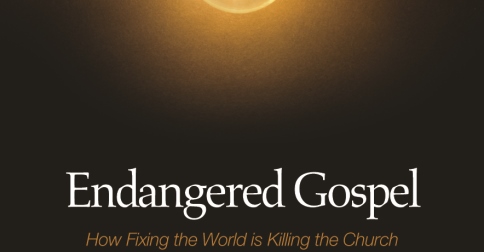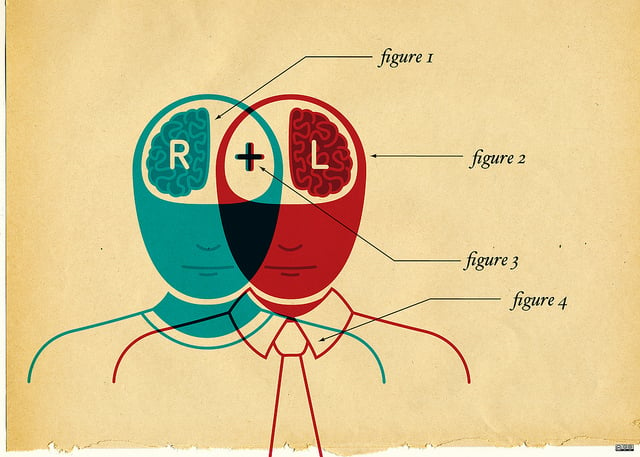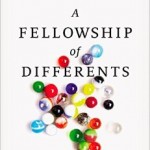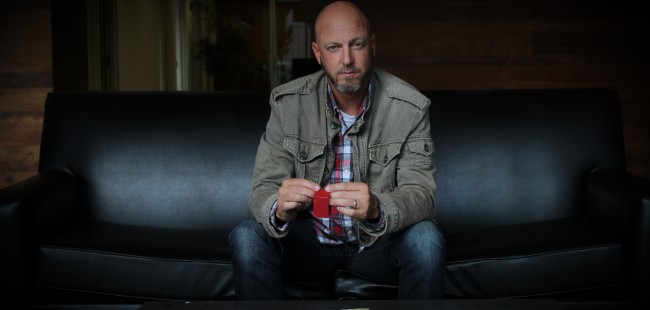 [ On July 5-7, The Ekklesia Project will hold its annual gathering in Chicago, which will be on the theme of Slow Church. Between now and July, we will be running a series of lguest reflections here by folks connected with the E.P. We’ve asked guest posters to reflect on the meaning of Slow Church from their own local contexts. More info on the E.P. gathering. ]
[ On July 5-7, The Ekklesia Project will hold its annual gathering in Chicago, which will be on the theme of Slow Church. Between now and July, we will be running a series of lguest reflections here by folks connected with the E.P. We’ve asked guest posters to reflect on the meaning of Slow Church from their own local contexts. More info on the E.P. gathering. ]
Today’s reflection, the sixth in the series, is by Janice Love.
Read the previous post in the series by Ted Lewis.
Give ear, O my people, to my teaching;
incline your ears to the words of my mouth.
I will open my mouth in a parable;
I will utter dark sayings from of old,
things that we have heard and known,
that our ancestors have told us.
We will not hide them from their children;
we will tell to the coming generation the glorious deeds of the LORD,
and his might,
and the wonders that he has done.
~Psalm 78: 1-4
I remember hearing someone reflect that when all is said and done we may with resurrected hindsight discover that our present time was still in the time of the early church. That made me stop and think. There may yet be a long way to go before the Parousia as God works according to God’s schedule (though I still pray, “Come soon, Lord Jesus!”). We are not charged with bringing about the Parousia itself but we are charged with passing the faith along to the next generation that they too might live in hope, waiting expectantly and participating where called in God’s mission in and for the world so loved.
My passion as a disciple in Christ’s church found its heart in the process of catechesis, understood as all that we do as a church and as disbursed disciples which shapes us and proclaims what is worthwhile to the next generation. It was a gift to encounter Walter Brueggemann’s reflections and insights about the biblical process of catechesis in his The Creative Word: Canon as a Model for Biblical Education. Brueggemann points out the celebratory context of much of the biblical form of catechesis – that the teachable moment arises when the children ask why the people do what they do or what particular religious signs or markers mean, such as in Joshua 4: 20-24:
Those twelve stones, which they had taken out of the Jordan, Joshua set up at Gilgal,
saying to the Israelites, “When your children ask their parents in time to come, ‘What
do these stones mean?’ then you shall let your children know, ‘Israel crossed over the
Jordan here on dry ground.’ For the LORD your God dried up the waters of the Jordan
for you until you crossed over, as the LORD your God did the Red Sea, which he dried
up for us until we crossed over, so that all the peoples of the earth may know that the
hand of the LORD is mighty, and so that you may fear the LORD your God forever.
Catechesis so understood is not a quick achievement but rather a slow process that happens over time in the context of a church clearly marking its celebrations of the glorious deeds of its Lord – the very story it lives and dies (and lives again) by. Kathleen Norris notes in The Quotidian Mysteries, her treatise for the importance of the everyday, that Paul Bosch’s study of the what nurtures good marriages discovers the importance of “seemingly perfunctory daily rituals and routines” (such as a kiss). Bosch comments that “Whatever you do repeatedly has the power to make you over into a different person – even if you’re not totally ‘engaged’ in every minute!” [p 80]
Much of what we do daily and (Christian) seasonally in our family has been based on the ministry I undertook at University Hill Congregation in Vancouver, British Columbia, alongside Rev. Ed Searcy (Ed has a previous post on this blog and is continuing the catechesis discussion on his own blog at www.holyscribbler.blogspot.ca/2012/04/missional-communal-catechesis.html#more ).
Each Christian season the colour and content of our table centrepiece changes accordingly – an Advent wreath, a white and gold setting for the Christ candle and baby Jesus for Christmas, a star for Epiphany, a Lenten crown of thorns (whose candles are lit through Lent for growth in discipleship and extinguished through Holy Week for the cost of that discipleship, then all covered in a black cloth on Good Friday), a white and gold setting for the new Christ candle and resurrected Christ figure on Easter, a circle of friends for Pentecost and the long season afterwards.
We employ a traveling crèche throughout Advent and a traveling Jesus (towards Jerusalem) throughout Lent. We’ve hosted a children’s party on the Feast of the Holy Innocents during Christmas (where the children excitedly helped the baby Jesus escape mad King Herod and safely arrive in Egypt). Our son receives a small chocolate lamb on each of the seven Sundays in Easter. The only calendar we use in our home is the one Ed and I conceived and that University Hill publishes each year which is structured by the Christian seasons so that pages are turned by the season and not by the month (see www.thechristiancalendar.com ).
All of these are practices we undertake, not always carried out perfectly, that over time we hope and pray will be useful tools in passing on the faith we have in Christ Jesus for the healing of the nations to the next generation.











